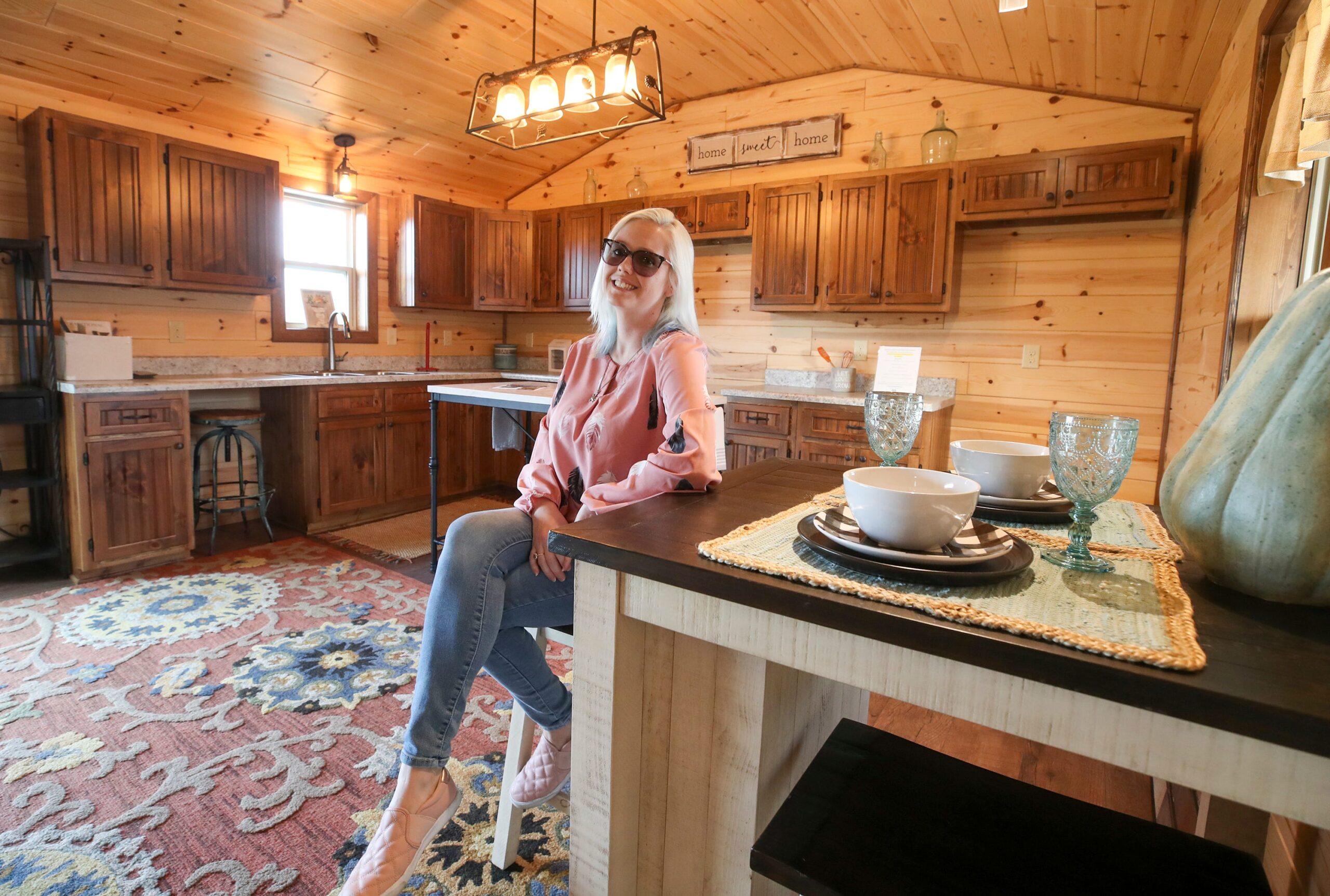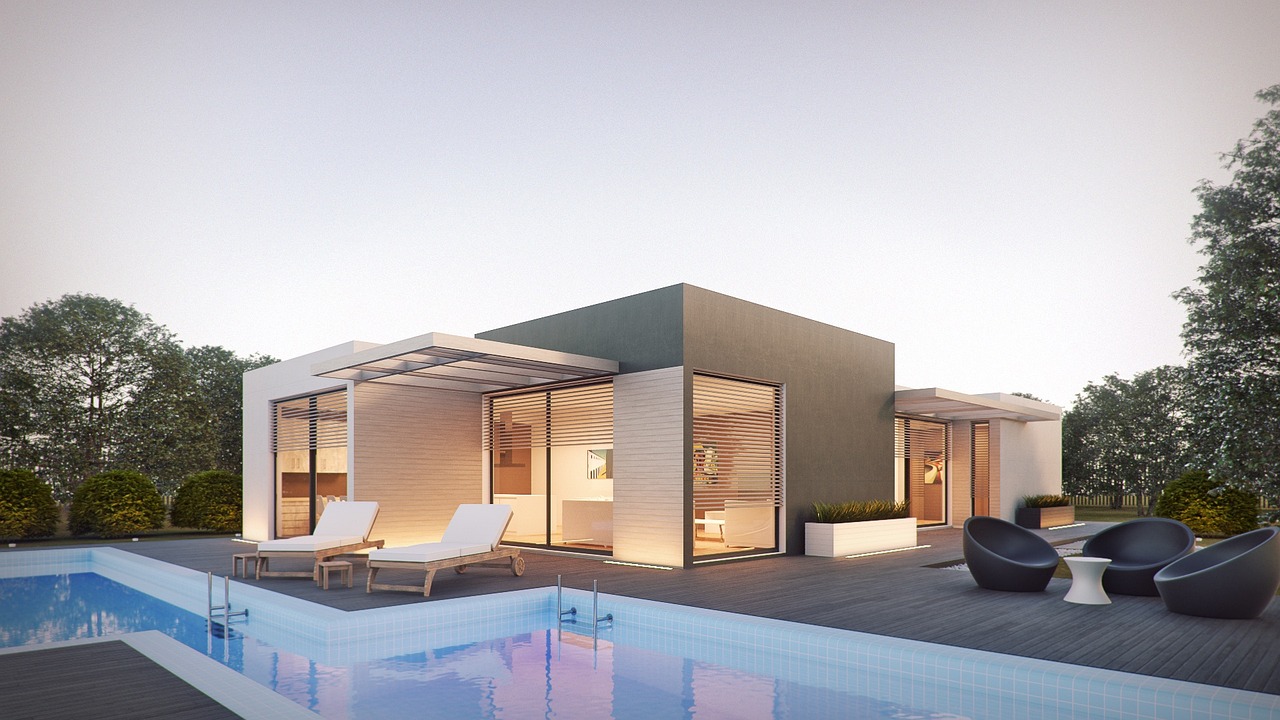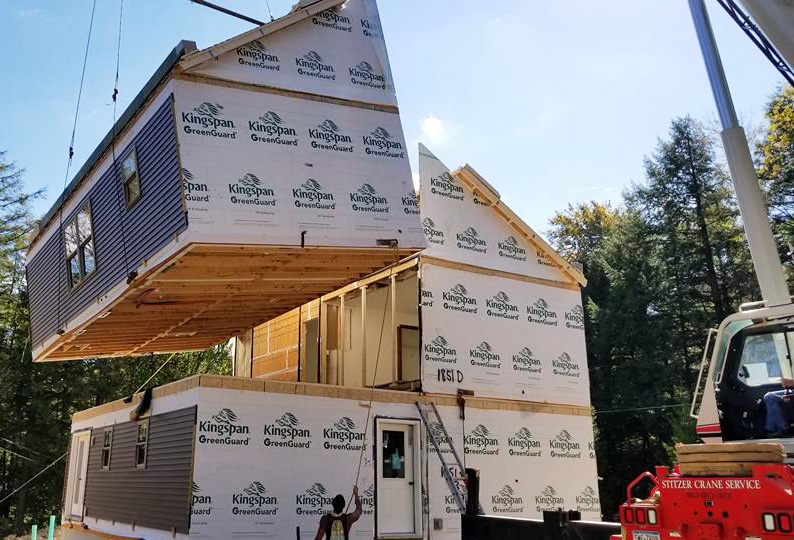Introduction
Modular homes have gained popularity in recent years for their cost-efficiency, speed of construction, and eco-friendly features. These homes are not only a viable housing solution but also offer a sustainable and efficient way of building. To truly appreciate the advantages of modular homes, it’s essential to understand the construction process from factory to foundation.
The construction process of modular homes begins with the design and planning phase, where the homeowner works with a modular home builder to create a customized floor plan and select materials and finishes. Once the design is finalized, the construction process moves to a factory, where the various modules or sections of the home are built in a controlled environment.
In the factory, skilled craftsmen assemble the modules using precision equipment and techniques. This controlled environment ensures that each module is built to exact specifications, with a high degree of quality and precision. It also minimizes the impact of weather-related delays and other common construction issues.
After the modules are completed, they are transported to the home site and assembled on the foundation. The assembly process typically takes a matter of days, rather than the weeks or months required for traditional site-built homes. Once the modules are in place and connected, the finishing touches are added, including plumbing, electrical, and interior finishes.
One of the significant advantages of modular construction is that it can be completed concurrently with site preparation. This means that while the modules are being built in the factory, the site work, such as foundation preparation and utility hookups, can also be underway. This parallel construction process can significantly reduce the overall timeline for building a modular home.
Overall, the construction process of modular homes offers several key benefits, including:
Speed: Modular homes can be built much faster than traditional homes, thanks to the controlled factory environment and parallel construction processes.
Quality: The precision and quality control measures in a factory setting often result in higher-quality construction compared to site-built homes.
Customization: Modular homes can be highly customized to meet the homeowner’s preferences in terms of layout, design, and finishes.
Sustainability: The efficient construction process generates less waste, and many modular homes are designed with energy-efficient features, making them a sustainable housing choice.
Cost-Efficiency: The streamlined construction process and reduced labor costs can lead to cost savings for homeowners.
Weather Resistance: Since much of the construction occurs indoors, modular homes are less susceptible to weather-related delays and damage.
In summary, the construction process of modular homes combines precision craftsmanship, customization, and speed to create high-quality, energy-efficient, and cost-effective housing solutions. Understanding this process can help homeowners appreciate the advantages of modular construction when considering their housing options.
For a comprehensive look at this subject, we invite you to read more on this dedicated page: B2-3-02, Special Property Eligibility and Underwriting …
Modular homes are constructed in a factory setting, where precision and quality control are paramount. Skilled craftsmen work in controlled environments, ensuring that each module is built to exact specifications. This precision minimizes errors and defects, resulting in a high-quality product.
Modular homes are constructed in a factory setting, where precision and quality control are paramount. Skilled craftsmen work in controlled environments, ensuring that each module is built to exact specifications. This precision minimizes errors and defects, resulting in a high-quality product that offers numerous advantages:
Structural Integrity: The controlled conditions of a factory allow for the precise measurement and assembly of each module. This ensures that all structural elements, including walls, floors, and roofs, are built to exacting standards, reducing the risk of structural issues that can arise in traditional on-site construction.
Consistent Quality: Every module produced in the factory undergoes rigorous quality control inspections at various stages of the manufacturing process. This consistency in quality is challenging to achieve in on-site construction, where factors like weather and varying skill levels of on-site workers can lead to inconsistencies.
Energy Efficiency: Precision in construction extends to insulation, thermal barriers, and the installation of energy-efficient windows and doors. Modular homes are designed to be highly energy-efficient, with minimal gaps and air leaks, resulting in lower energy consumption and reduced heating and cooling costs.
Reduced Material Waste: Factory-based construction generates less material waste compared to traditional building methods. Materials are ordered and cut precisely, minimizing overages and reducing the environmental impact associated with excess waste.
Faster Construction: The streamlined assembly line approach in a factory accelerates construction timelines significantly. While on-site construction projects can take months or even years, modular homes can be manufactured and assembled in a fraction of that time. This efficiency benefits both builders and homeowners.
Cost Savings: The reduced construction time, efficient use of materials, and controlled labor processes often result in cost savings for homeowners. Modular homes can offer a more affordable housing option compared to traditional site-built homes without compromising on quality.
Weather Independence: Factory construction is not susceptible to weather-related delays and disruptions. Rain, snow, extreme heat, or cold weather do not impact the quality or progress of modular home construction. This reliability is especially advantageous in regions with unpredictable weather patterns.
Customization: Contrary to common misconceptions, modular homes offer a wide range of design options and customization opportunities. Homeowners can select from various floor plans, finishes, and architectural styles, tailoring their home to their preferences and needs.
Longevity: The combination of precise construction and quality control measures contributes to the longevity of modular homes. These homes are built to last, providing comfort and reliability for homeowners for many years.
Environmental Sustainability: With a reduced carbon footprint due to less waste and energy-efficient features, modular homes align with sustainable building practices. They appeal to environmentally conscious homeowners seeking eco-friendly housing solutions.
In conclusion, the precision and quality control measures applied in the factory setting of modular home construction result in a high-quality, energy-efficient, and cost-effective housing option. These advantages, along with the ability to customize designs, make modular homes an appealing choice for those seeking a durable, environmentally friendly, and well-constructed living space.
You can also read more about this here: subject matters chapter 4 factory built housing Flashcards | Quizlet

Despite being factory-built, modular homes offer a high degree of customization. Homebuyers can choose from a range of floor plans, layouts, finishes, and even eco-friendly features. This flexibility allows homeowners to design a home that suits their unique preferences and needs.
Modular homes, despite their factory-built nature, provide homeowners with an impressive level of customization. This flexibility extends to a variety of aspects, including floor plans, interior layouts, finishes, and even eco-friendly features. In essence, modular homes offer a blank canvas upon which homeowners can imprint their unique vision for the perfect dwelling. Whether it’s an open-concept living space, a gourmet kitchen, or sustainable energy solutions, the range of customization options ensures that modular homes can cater to a diverse array of preferences and needs.
If you’d like to dive deeper into this subject, there’s more to discover on this page: A Comprehensive Guide to Building Modular Homes

Once the modules are constructed, they are transported to the building site. The assembly process is remarkably efficient, taking significantly less time compared to traditional construction. The modules are craned into place and secured to the foundation, with the entire structure often completed within a matter of days.
“Modular construction’s efficiency is further exemplified by the streamlined assembly process. Once the modules are manufactured, they are transported to the building site. Using cranes and skilled labor, these modules are swiftly and precisely fitted together and secured to the foundation. This process typically takes only a fraction of the time required for traditional construction methods, with entire structures often completed within days or weeks.”
Additionally, you can find further information on this topic by visiting this page: Manufactured and Modular Homes

Modular construction is inherently eco-friendly. The controlled factory environment reduces waste, and leftover materials are recycled or repurposed. Additionally, the energy efficiency of modular homes helps reduce the environmental footprint over the long term. Many modular homes are designed to meet or exceed energy efficiency standards, saving homeowners on utility bills and reducing greenhouse gas emissions.
“Modular construction stands out as a beacon of sustainability in the realm of housing. Its eco-friendly attributes extend beyond the factory setting, making it a responsible choice for environmentally conscious homeowners. Here’s an extended perspective on why modular construction is a game-changer for sustainable living:
Efficient Material Use: Modular construction optimizes material usage to an impressive degree. Precise planning and cutting in the factory result in minimal waste. Any leftover materials are carefully managed, often being recycled or repurposed in other construction projects. This approach significantly reduces the environmental burden associated with traditional construction.
Reduced Site Disruption: The majority of construction activities in modular home building occur in a controlled factory environment. This means fewer on-site disturbances such as noise, dust, and emissions, which can disrupt the local ecosystem and inconvenience neighbors. Reduced site disruption contributes to a more sustainable and harmonious community.
Lower Energy Consumption: Many modular homes are designed with energy efficiency in mind. They often incorporate features such as advanced insulation, energy-efficient windows, and high-efficiency HVAC systems. These measures reduce energy consumption, decrease utility bills for homeowners, and contribute to a smaller carbon footprint.
Greener Building Materials: Modular construction often includes the use of sustainable and eco-friendly building materials. From renewable wood sources to recycled materials, these choices align with responsible environmental stewardship, reducing the reliance on resource-intensive materials.
Long-Term Resource Conservation: Modular homes’ durability and energy efficiency translate into long-term resource conservation. These homes are built to last, reducing the need for frequent replacements or extensive renovations. This not only saves resources but also minimizes the waste generated by the disposal of older homes.
Solar and Green Technologies: Many modular homes can easily incorporate solar panels and other green technologies. Harnessing renewable energy sources further reduces reliance on non-renewable energy and lowers greenhouse gas emissions.
Healthier Indoor Environments: Modular construction often emphasizes indoor air quality. Proper ventilation systems, non-toxic materials, and mold-resistant construction techniques create healthier living spaces for occupants, contributing to overall well-being.
Resilience to Climate Change: Some modular homes are engineered to be resilient in the face of climate change and extreme weather events. These homes can withstand hurricanes, floods, and other disasters more effectively, reducing the need for reconstruction and its associated environmental impacts.
Community and Urban Planning: The efficient construction process of modular homes aligns with sustainable urban and community planning. It allows for the rapid development of eco-friendly housing solutions in growing urban areas, reducing the strain on infrastructure and resources.
Education and Advocacy: The adoption of modular construction can serve as an educational tool and catalyst for sustainable living. As more people become aware of its benefits, it can drive advocacy and inspire positive change in the broader construction industry.
In summary, modular construction goes beyond efficiency in the factory; it represents a holistic approach to sustainable living. Through reduced waste, energy efficiency, and eco-friendly materials, modular homes contribute to a more environmentally responsible way of living while delivering long-term benefits to homeowners and the planet alike.”
If you’d like to dive deeper into this subject, there’s more to discover on this page: A Comprehensive Guide to Building Modular Homes

Modular homes are a cost-effective alternative to traditional site-built homes. The reduced construction time means fewer labor costs, and the controlled environment minimizes material waste. These factors make modular homes an attractive option for budget-conscious homebuyers.
In addition to cost-effectiveness, modular homes offer energy efficiency benefits. The controlled manufacturing process ensures that insulation, windows, and other components are installed to high standards, leading to better energy performance and lower utility bills for homeowners. This combination of affordability and sustainability makes modular homes a smart choice for those looking to reduce their environmental footprint while staying within budget.
Additionally, you can find further information on this topic by visiting this page: Factory-Built Housing for Affordability, Efficiency, and Resilience …

Modular homes undergo rigorous quality control processes throughout their construction. Inspections are conducted at various stages to ensure that each module meets safety and quality standards. This commitment to quality results in a durable and reliable home.
Modular homes undergo rigorous quality control processes throughout their construction. Inspections are conducted at various stages to ensure that each module meets safety and quality standards. This commitment to quality results in a durable and reliable home, offering homeowners peace of mind and long-term satisfaction with their investment.
Additionally, you can find further information on this topic by visiting this page: Factory-Built Housing | California Department of Housing and …

Conclusion
From factory precision to eco-friendly benefits and cost-effective construction, modular homes offer numerous advantages. Understanding the construction process from factory to foundation illuminates the reasons behind the growing popularity of these innovative housing solutions. Whether you seek a sustainable, budget-friendly, or customizable home, modular construction provides a compelling alternative to traditional housing methods.
“From factory precision to eco-friendly benefits and cost-effective construction, modular homes offer numerous advantages that are transforming the housing landscape. Understanding the construction process from factory to foundation illuminates the reasons behind the growing popularity of these innovative housing solutions.
Speed and Efficiency: Modular homes are constructed in a controlled factory environment, minimizing weather-related delays and ensuring efficient assembly. This means your home can be built much faster than traditional stick-built houses, reducing the time it takes to move into your dream home.
Quality Assurance: Factory construction allows for rigorous quality control measures. Each module is built to exacting standards, ensuring that your home meets high-quality benchmarks. This precision results in a structurally sound and durable residence.
Eco-Friendly Practices: Modular construction is inherently eco-friendly. The assembly process generates less waste, and many manufacturers prioritize sustainable building materials and energy-efficient features. This not only reduces your environmental footprint but also leads to long-term cost savings through energy efficiency.
Customization Options: Modular homes provide a wide range of customization options. You can work with architects and builders to design a home that suits your family’s specific needs and preferences, from layout and floor plan to finishes and fixtures.
Cost-Effective Solution: Despite the many benefits, modular homes often remain cost-effective. The controlled factory environment reduces labor costs, and you have the flexibility to choose features that match your budget. This makes modular construction an attractive option for those seeking affordability without compromising on quality.
Sustainability: If you’re environmentally conscious, modular homes offer sustainable solutions. You can incorporate eco-friendly materials, renewable energy sources, and water-saving technologies, aligning your home with green living principles.
Adaptability and Expansion: Modular homes are designed for adaptability. As your family’s needs change, you can easily add modules to your existing structure. This adaptability ensures that your home can grow with your family, reducing the need for relocation as your circumstances evolve.
Design Versatility: Modular homes can be designed to emulate various architectural styles, from traditional to contemporary. You have the freedom to create a home that reflects your personal taste and style, making it truly unique.
In summary, whether you seek a sustainable, budget-friendly, or highly customizable home, modular construction provides a compelling alternative to traditional housing methods. The combination of speed, quality, and flexibility makes modular homes an attractive choice for those looking to embrace the future of housing while enjoying the benefits of efficient and eco-conscious living.”
To expand your knowledge on this subject, make sure to read on at this location: CIrcular 26-18-7
More links
Explore this link for a more extensive examination of the topic: Local Modular Unit and Factory Built Housing Contractors | Grand …
